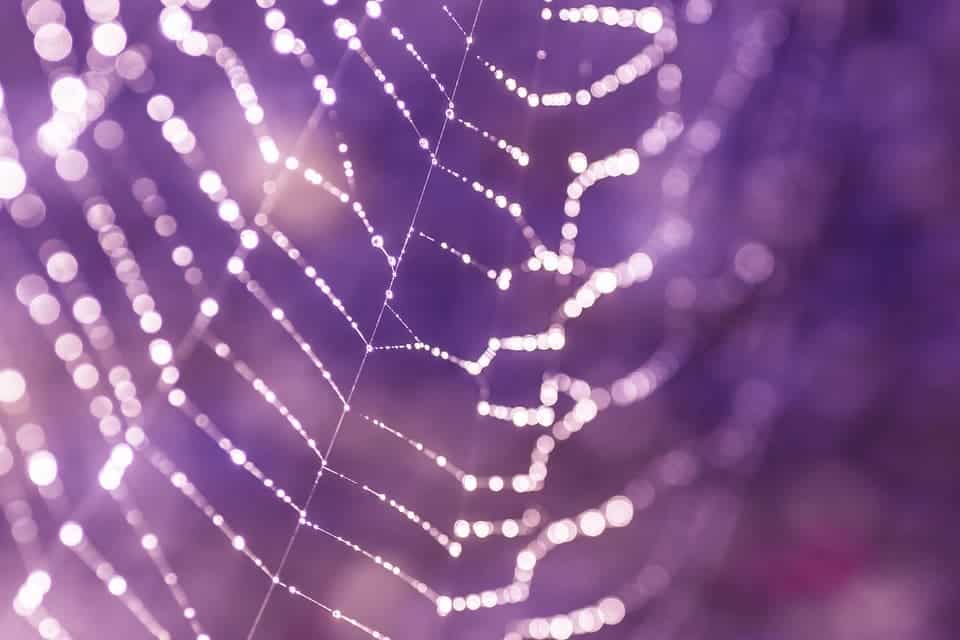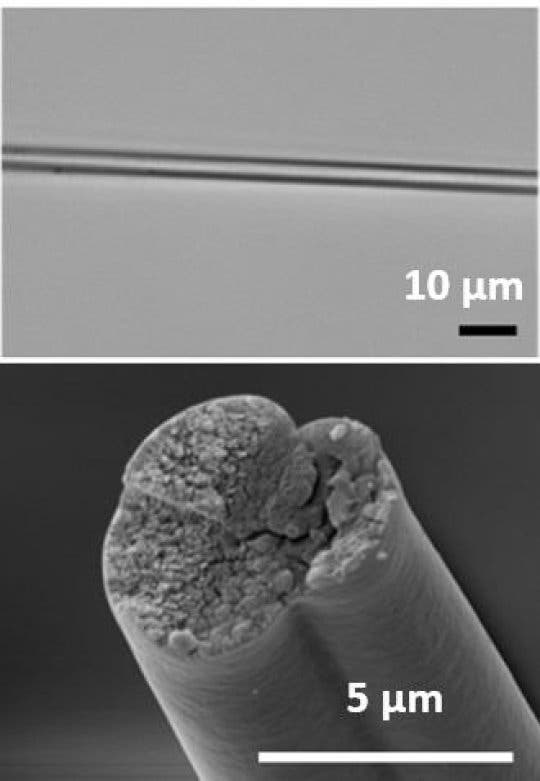One team of researchers plans to use engineered bacteria to create proteins. Proteins that will take us to space.

We tend to view biology as mushy and fragile, while everything mechanical is seen as robust. But that isn’t actually true. Natural, protein-based substances can boast mechanical properties on par with — and sometimes exceeding those of — synthetic materials. A pound of spider silk, for example, is stronger and tougher than a pound of the steel we use to make buildings or cars. So, naturally, we’d very much like to have such materials in cheap and ample supply, please.
But we don’t, because we have no idea how to mass-produce spider silk and other similar proteins. That is, we had no idea. Today at the American Chemical Society (ACS) Spring 2019 National Meeting & Exposition, one team of researchers is presenting a method they developed that uses genetically-engineered bacteria to produce proteins such as those in spider silk, and is planning to use them in future space missions.
“In nature, there are a lot of protein-based materials that have amazing mechanical properties, but the supply of these materials is very often limited,” says Fuzhong Zhang, Ph.D., the project’s principal investigator. “My lab is interested in engineering microbes so that we can not only produce these materials, but make them even better.”
Spiders, as the biology majors among you may suspect, tend to be quite tiny. They’re also not especially excited by the prospect of roommates: they turn cannibalistic if you try to keep them in groups. That’s why researchers have tried to work around using them altogether by attempting to engineer bacteria, yeast, plants, even goats to produce spider silk. So far, they haven’t yet been able to fully replicate the natural fiber’s mechanical properties. They weren’s complete disasters, but the end product fell quite short of the mark.
Part of the problem, Zhang’s team explains, is that spider silk proteins are encoded in very long, highly repetitive sequences of DNA. The spiders also evolved the biochemical means to hold these sequences stable in their genome. Other organisms, however, don’t need these biochemical mechanisms. So, when we try copy-pasting silk genes in other genomes, they degrade; usually because the host organism’s cells alter or shorten the genes. Zhang and his team of researchers at Washington University in St. Louis thought that breaking them down into shorter blocks could help keep them stable — kind of how Ikea would do it. Bacteria engineered this way would only produce sub-sections of the needed proteins. The team would manage the final assembly steps.

Image credits Christopher Bowen.
They spliced genes encoding two pieces of the spider silk protein into bacteria, flanking each piece with a ‘split intein’. Split inteins, they explain, are naturally occurring protein sequences with enzymatic activity. Two split inteins on different protein blocks can join (forming an intein) and then cut themselves out to weld the two blocks together. Pretty handy.
After the genes were introduced to the bacteria, the team broke them apart and retrieved the protein sub-assemblies. Mixed together, the two halves reacted, producing the final protein, which the team spun into fibers. They report that the final product has all the properties of spider-spun spider silk — it’s exceptionally stretchy, tough, and strong. Overall, the method seems to be better at making the silk than spiders themselves. The team obtained two grams of silk per liter of bacteria culture (more than they would obtain from the same ‘volume’ of spiders).
Best of all, the approach isn’t limited to spider silk. Other repetitive proteins can be synthesized by simply swapping out the silk-encoding DNA with other sequences. As a proof of concept, the team also produced a protein that mussels use to stick to different surfaces — which they say can be used as a super-strong underwater adhesive.
The team is currently trying to increase the yield of their bacteria even more. They are also trying to streamline the process so that the bacteria themselves handle the final assembly of the proteins. This would improve the efficiency and potential automation of the system because researchers wouldn’t have to purify the two pieces of the protein and then incubate them together.
“NASA is one of our funders, and they are interested in bioproduction,” says Zhang. “They’re currently developing technologies in which they can convert carbon dioxide into carbohydrates that could be used as food for the microbes that we’re engineering. That way, astronauts could produce these protein-based materials in space without bringing a large amount of feedstocks.”


